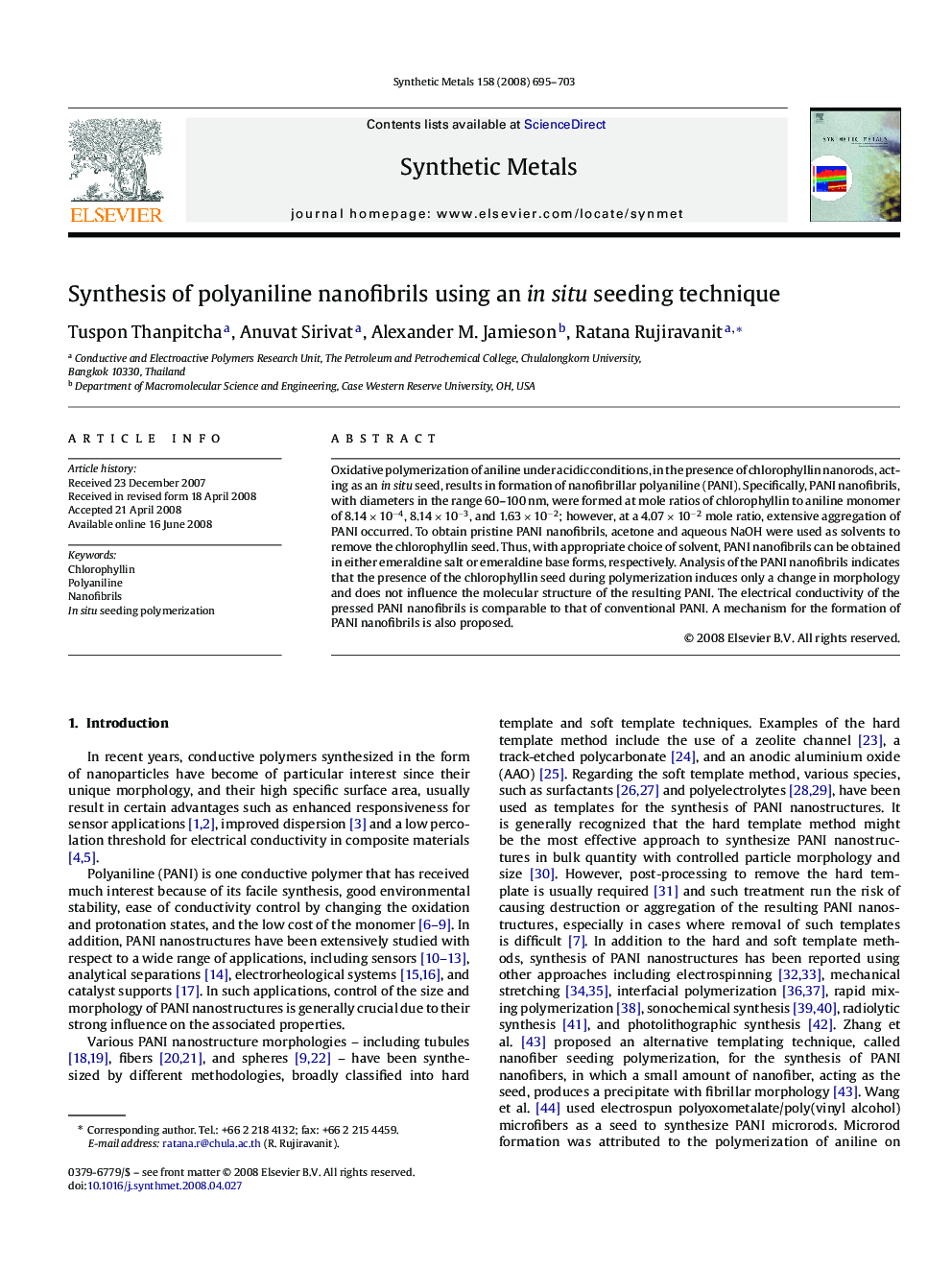| Article ID | Journal | Published Year | Pages | File Type |
|---|---|---|---|---|
| 1443319 | Synthetic Metals | 2008 | 9 Pages |
Oxidative polymerization of aniline under acidic conditions, in the presence of chlorophyllin nanorods, acting as an in situ seed, results in formation of nanofibrillar polyaniline (PANI). Specifically, PANI nanofibrils, with diameters in the range 60–100 nm, were formed at mole ratios of chlorophyllin to aniline monomer of 8.14 × 10−4, 8.14 × 10−3, and 1.63 × 10−2; however, at a 4.07 × 10−2 mole ratio, extensive aggregation of PANI occurred. To obtain pristine PANI nanofibrils, acetone and aqueous NaOH were used as solvents to remove the chlorophyllin seed. Thus, with appropriate choice of solvent, PANI nanofibrils can be obtained in either emeraldine salt or emeraldine base forms, respectively. Analysis of the PANI nanofibrils indicates that the presence of the chlorophyllin seed during polymerization induces only a change in morphology and does not influence the molecular structure of the resulting PANI. The electrical conductivity of the pressed PANI nanofibrils is comparable to that of conventional PANI. A mechanism for the formation of PANI nanofibrils is also proposed.
